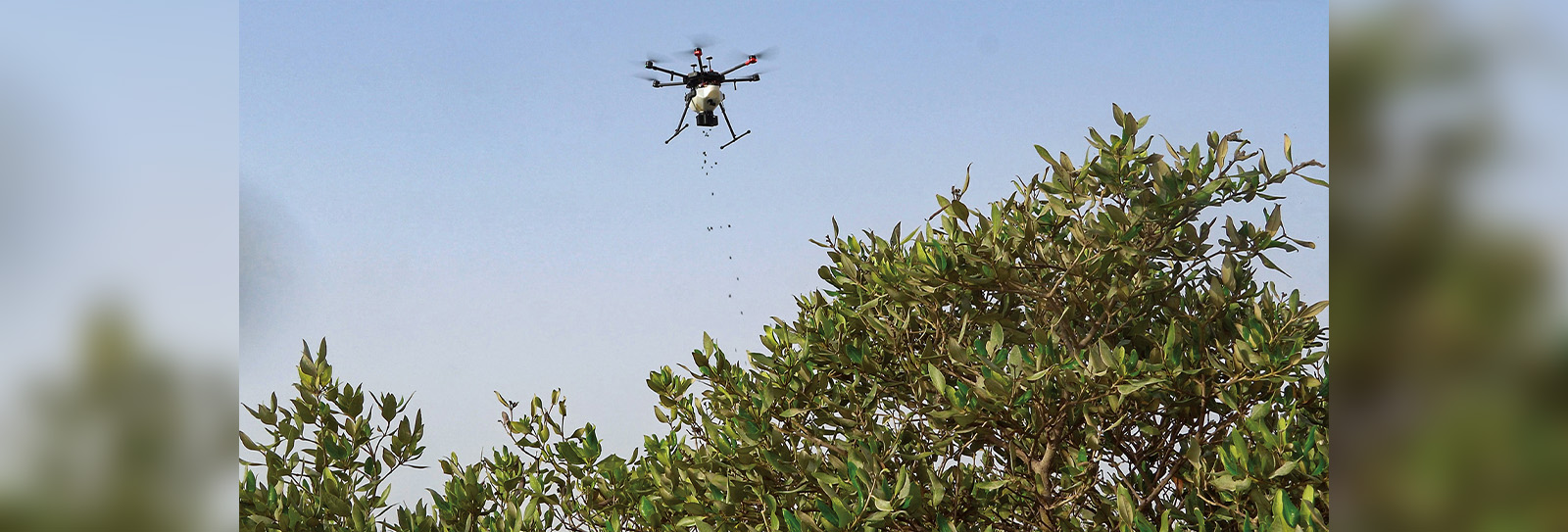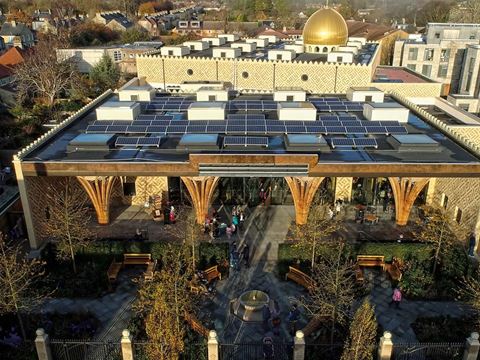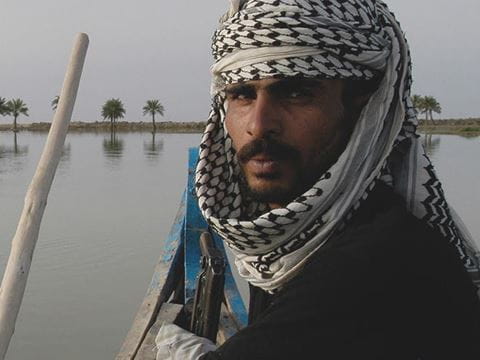
How Drone Seeding Supports Mangroves and Carbon Storage
Mangroves have been drawing increasing global attention for a quiet superpower: the ability to store up to five times more carbon than tropical forests. While coastal development, uncontrolled aquaculture, sea-level rise and warming temperatures have all contributed to the 35 percent decline in mangrove forests worldwide since the 1970s, government agencies, scientists and local communities are increasingly rallying to protect and replant mangroves. One group is taking restoration to notably new heights.
Thick, tangled and not particularly Instagram-ready, mangroves are low-profile denizens of salty, swampish, tidal coastlines around the world. Despite lacking the grandeur of redwood forests or the allure of sandy beaches, mangroves have been drawing increasing global attention for a quiet superpower: the ability to store up to five times more carbon than tropical forests. While coastal development, uncontrolled aquaculture, sea-level rise and warming temperatures have all contributed to the 35 percent decline in mangrove forests worldwide since the 1980s, government agencies, scientists and local communities are increasingly rallying to protect and replant mangroves. One group is taking restoration to notably new heights.

Mangroves have thrived along tropical and subtropical shorelines around the world for some 75 million years, and they are comprised now of more than 50 species distributed among five scientific families. Some mangroves grow directly along the shore, and others inhabit wetlands farther inland, sometimes up to 50 kilometers. In recent decades their populations have been in sharp decline due to widespread development, as well as cyclones and rising sea levels associated with climate change.


Along coasts of the African continent, nearly 1,000 square kilometers—almost the size of Hong Kong—of mangrove forests have been lost from 1975 to 2013. In the Philippines, 50 percent of mangroves have died out since the 1990s. According to a 2020 study by NASA Earth Observatory, at least 62 percent of mangrove loss is tied directly to human activity, while much of the remaining 38 percent comes from erosion that often has indirect links to human activity, too.
The costs of mangrove losses are increasingly well-known to be higher than previously imagined. As one of the only tree species that can tolerate saltwater, every mangrove forest—from the US to Nigeria, to Indonesia and Oceania—provides a plethora of benefits for its environment. Carlos Duarte, research professor in marine ecosystems at King Abdullah University of Science and Technology (KAUST), located along the Red Sea coast of Saudi Arabia, explains that mangroves, especially those that extend tens of kilometers inland, “protect our shorelines from sea level rise and storms and support food security through their role in nurturing fish stocks.”


Mangroves also stand as many a coastline’s first line of defense against storm-driven tides and coastal winds. This simultaneously shields coastal areas from erosion and helps protect inland human communities.
The intricate but tough mesh of mangrove roots, which tangle both above and beneath the surface, also provide often unique habitats for many aquatic and other species. “Mangroves provide essential habitat for birds, crabs and hundreds of invertebrate and fish species, many of which use the mangrove as their nursery during the early life stages of the species,” says Duarte. While this environment primarily benefits marine life, other species—from jaguars to sea eagles—also cash in on the sanctuary mangroves provide. According to a 2021 report published by the Global Mangrove Alliance, some 341 vulnerable, endangered or critically endangered species call mangroves home.

Economically, mangroves are also important to local communities for fish, rot- and insect-resistant wood stocks, and even leaves that can be used to feed cattle, sheep and goats. Mangroves are also increasingly popular with wildlife enthusiasts and environmental tourists.
While beneficial, even these qualities are increasingly eclipsed in importance by mangroves’ carbon capture. They “sink” captured CO2, microalgae, and other dead organic matter trapped by their net of roots into sea mud beneath them. This is carbon that is then able to be stored, undisturbed, for centuries, even millennia, as carbon-based matter degrades much more slowly underwater due to lack of oxygen. Over time this material accumulates into a carbon stock known as blue carbon which is, according to Duarte, some five times denser than what a tropical land-based forest can store. In practical terms, this means that each square kilometer of mangroves can sequester the annual emissions of approximately 35,000 cars. (Unfortunately, blue carbon works the other way around, too: The destruction of mangrove forests releases their stored blue carbon.)
“Mangroves sequester around five times more carbon than tropical forests on land and provide more likelihood of permanent sequestration.”
—Carlos Duarte



Left In Abu Dhabi, traffic flows along Al Salam Street next to the Eastern Mangrove National Park showing a delicate interaction between people and nature. Right In efforts to educate the next generation, children are taught the benefits of mangrove forests in an environmental class in Dudepo, Bolmaang Selatan, Sulawesi, Indonesia.
Alfredo Quarto, executive director and cofounder of the US-based Mangrove Action Project, claims that the value of mangroves and their stored blue carbon is only beginning to be recognized. “Back in 1992, mangroves were valued at around [US] $740 per hectare, mainly for fisheries and raw timber. But with climate change and the great need for coastal protection from storm surges and hurricanes, they are now valued from around $30,000 to $300,000 or more per hectare.”
Smithsonian Institution co-coordinator for marine conservation Steven Canty adds that while official studies value mangroves at US $193,843 per square kilometer, that figure doesn’t “adequately integrate social and cultural value” that further bolsters their value.
This change in the economic equation is behind much preservation and restoration, and according to the Mangrove Action Project, the worldwide rate of loss has begun to slow from almost 50,000 hectares to around 21,000 each year. “It is encouraging to see that rates of loss of mangroves have declined over the last 30 years,” explains Quarto, “but there still is an urgent need to halt all further loss.”
In Saudi Arabia, Aramco, the integrated energy and chemicals company, is leading a concerted effort to establish new forests along the country’s coasts. Since 1993 the company has planted more than 4.3 million mangrove trees at sites along the Arabian Gulf and Red Sea coasts and created the Mangrove Eco-Park nature reserve in Ras Tanura, Saudi Arabia.


As the black dot of the drone appears to hover above the hazy horizon, one of the technicians announces that the seedballs are being released. At a distance, it isn’t actually visible, but Jane Glavan, cofounder of Distant Imagery, explains that to date her company has planted some 1.5 million mangrove trees this way. “From our understanding, we are the first in the world to successfully restore mangroves with drones.” She hopes to make the method universally accessible: The custom-built drone, she says, can be replicated by anyone with access to a 3-D printer.
In addressing loss, restoration and the future of mangroves as a carbon-holding resource, all of science, policy, technology and community come into play.
Since 2011 the Blue Carbon Initiative (BCI) has united nongovernmental organizations Conservation International and the International Union for Conservation of Nature with the Intergovernmental Oceanographic Commission of UNESCO to improve collective access to scientific data. In 2017 the BCI created the Coastal Carbon Coordination Network with the Smithsonian Environmental Research Center and other partners, which is accelerating discovery in coastal carbon science and centralizing sharable data in the Coastal Carbon Atlas. The year 2018 saw the launch of the Global Mangrove Alliance, as a partnership among Conservation International, The Nature Conservancy, World Wildlife Fund, Wetlands International and a growing consortium of international NGOs and research institutions, with a goal of expanding global mangrove habitats by 20 percent by 2030.
While ambitious, this is roughly the percentage of mangrove expansion already achieved along the Red Sea coast of Saudi Arabia. Duarte points to the mangroves along the shore of the campus of KAUST, which have been expanded by some 20 percent over the past decade. Additionally, because the Red Sea mangroves grow over a seabed of limestone, which holds even more carbon than other underwater floors, the mangroves here are especially efficient at capturing blue carbon, he explains.


“Drones are particularly effective in sensitive areas, areas that have micronuances of tidal elevations which need to be maintained such as in the UAE,” says Glavan. “You can see the impact of having thousands of footprints churning and compacting the soil with traditional planting at scale, [and] drones allow for little human impact on the site.”
This makes drones—Unmanned Aerial Vehicles, or UAVs—a growing tool in blue carbon initiatives. In addition to dropping seeds, they can survey vast tracts of land, gather and process data about it in real time and reach locations people find difficult or even destructive to reach.
Back on the Abu Dhabi shoreline, the buzz of the drone slowly returns, and it drops to the ground, its undercarriage empty. The team will return with it in the next planting season, probably in September and October. After contact with a suitable surface, mangroves tend to thrive naturally, explains Amna Khalifa Al Mansoori, a doctoral student working with the Environment Agency-Abu Dhabi. “Once you plant a mangrove sapling, you don’t need to do much work, provided you’ve planted it in a suitable muddy area or an area where mangroves have successfully grown before.”
While people have lived and worked among them for centuries, mangroves have never been more important. Starting with marine and plant science that leads to globally shared ideas—such as seed drops from 3-D-printed drones and the recognition of mangrove “carbon superpowers”—the value of mangroves only grows. With that grows their role in our planetary future.
You may also be interested in...

Karabakh Horse Rides Again: A Comeback for a Azerbaijan Treasure
Science & Nature
Strength, speed and a lustrous coat made the Karabakh horse a symbol of status, power and beauty in its native Azerbaijan, and beyond. Wars over the past century nearly eliminated them, but now breeders are steadily restoring their numbers.
Green Mosques Generate Positive Energy
Arts
Science & Nature
From Jordan and Morocco to Indonesia, the uk and more, communities and governments are supporting eco mosques. The goals: education and thrift. “We want to lead by example,” says the manager of Masjid Az-Zikra in Indonesia.
A Quest to Restore the Marshes of Iraq
History
Science & Nature
Until the 1990s, the reed marshes of Iraq were Eurasia's most extensive wetlands, with a unique ecology that supported the Marsh Arabs' distinctive way of life. Then the marshes were drained and the people scattered. Azzam of Alwash, the emigré son of an Iraqi hydrologist, now works with international aid groups and Iraqi authorities to restore the desiccated marshlands. Reeds are sprouting, birds and fish are returning-and so are people. "A 7000-year-old culture doesn't die in a decade, he says.